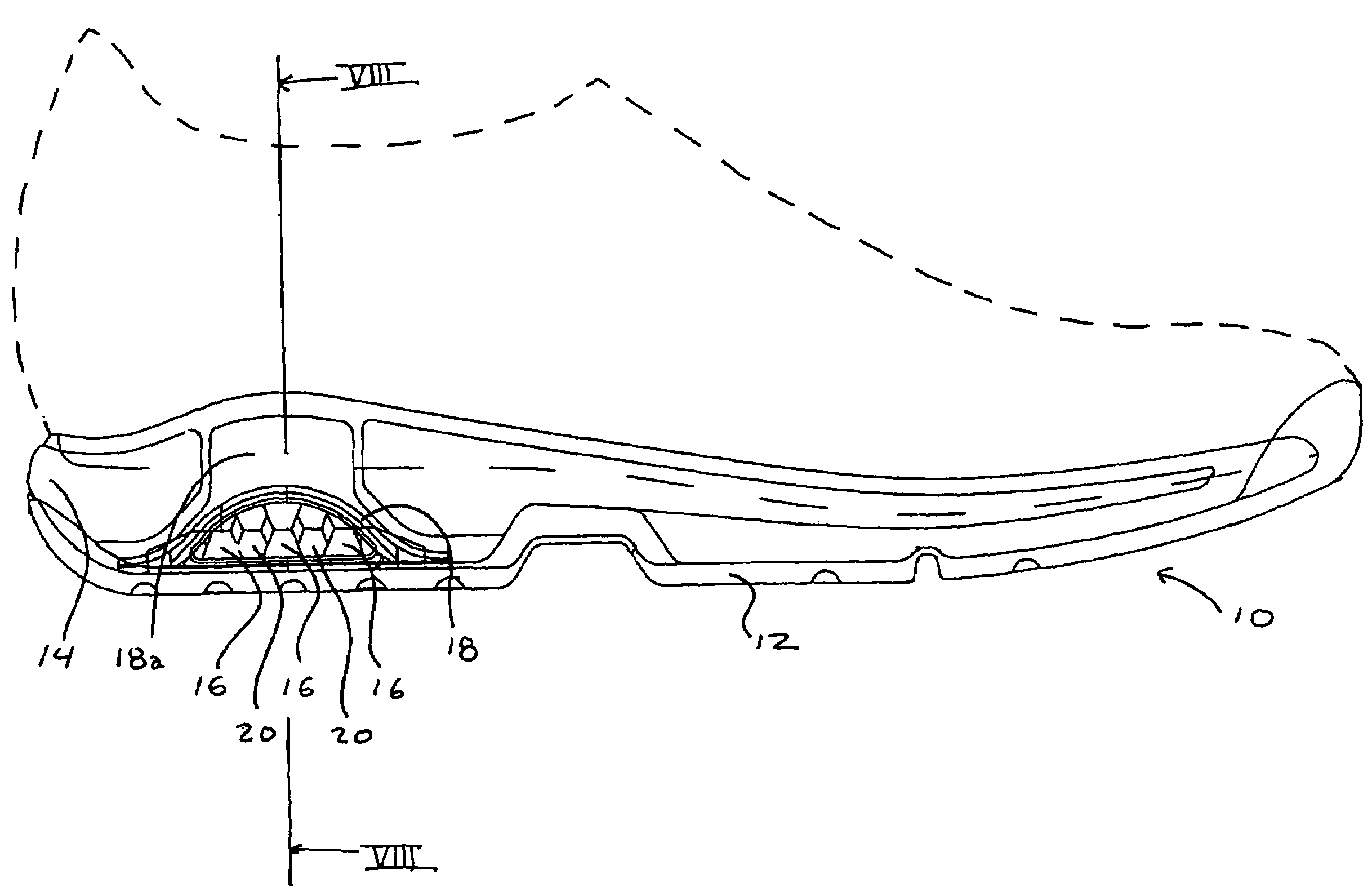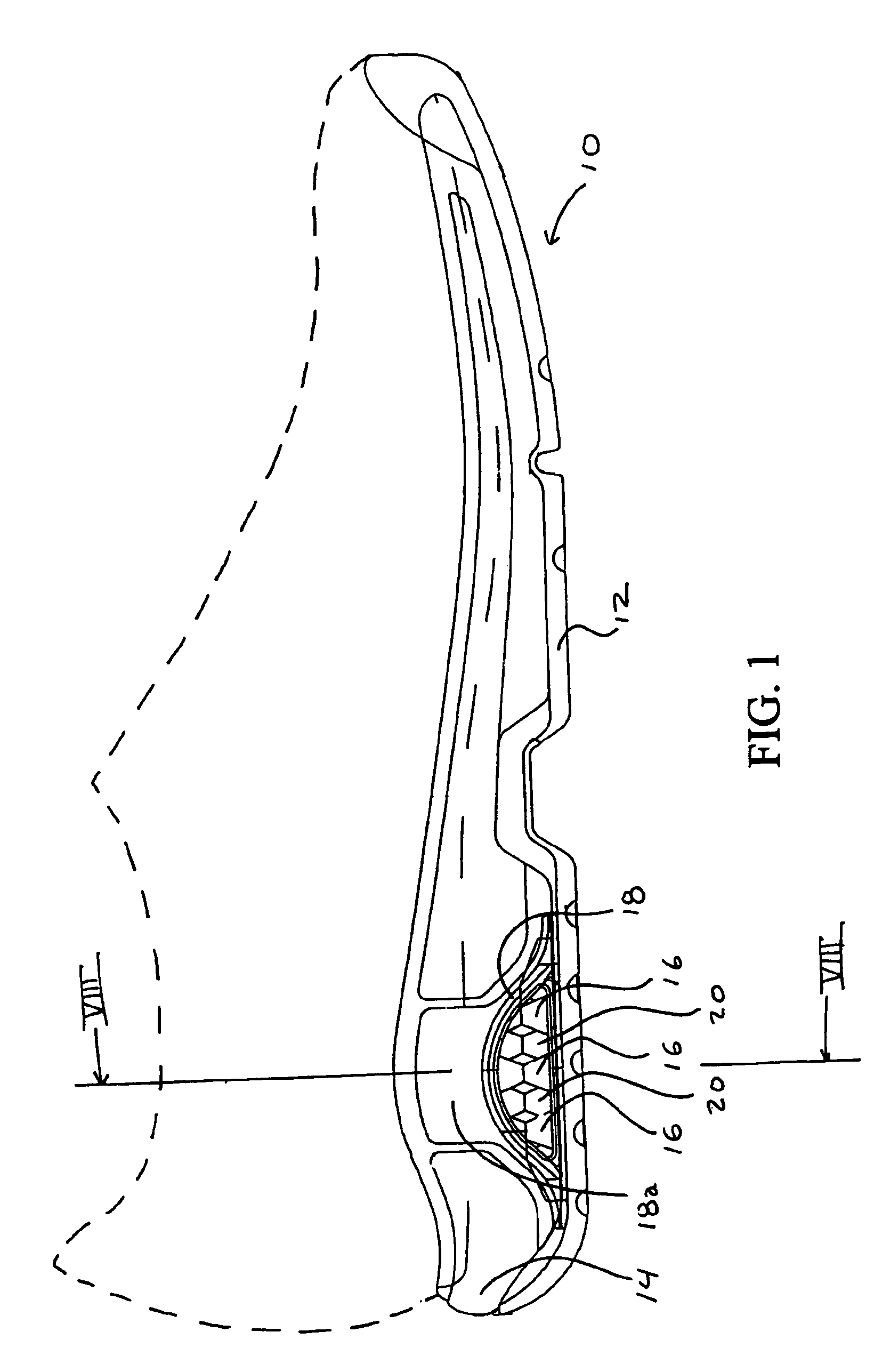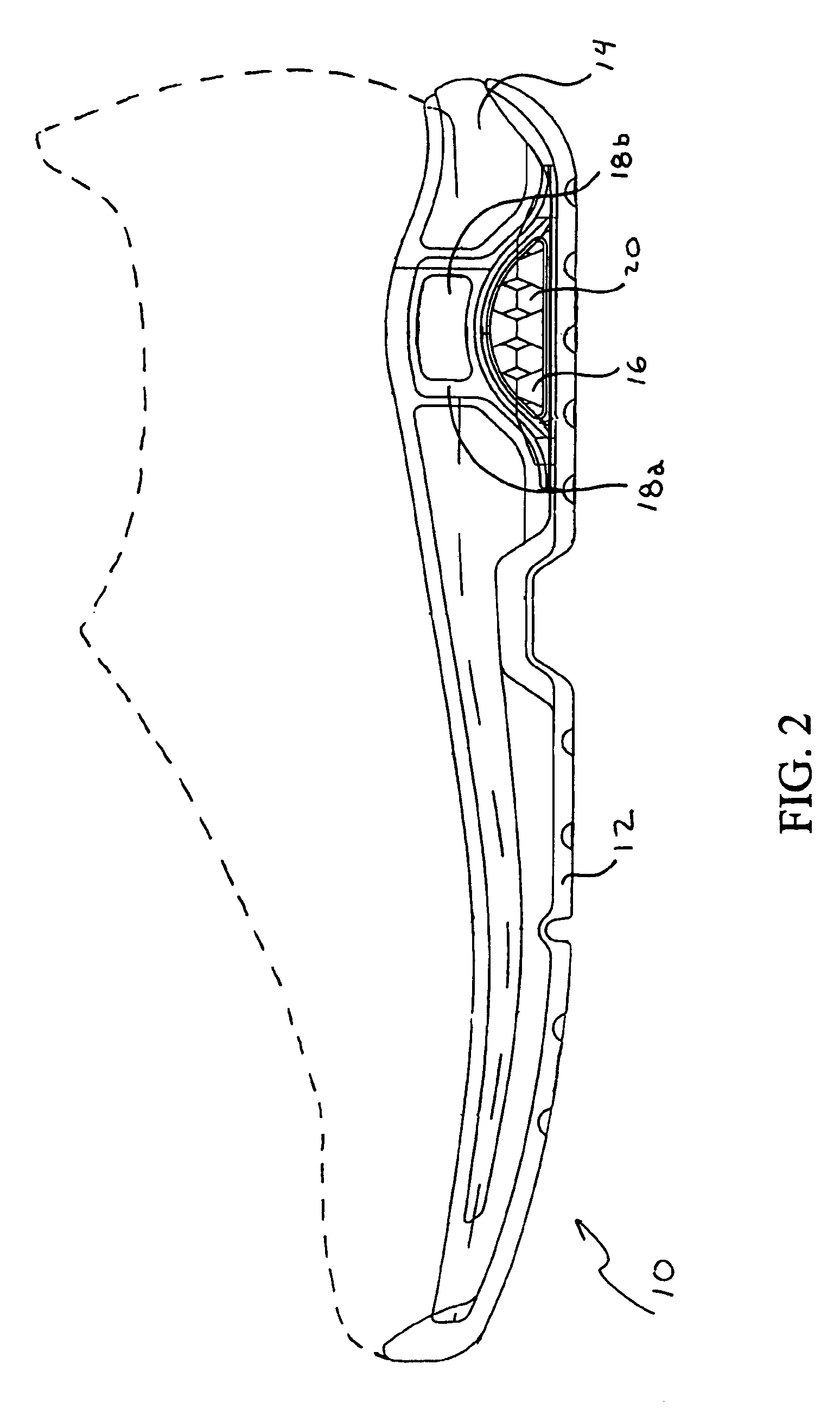Cushioning assembly in an athletic shoe
a technology for athletic shoes and cushioning, applied in the field of athletic shoes, can solve the problems of excessive force transmission directly to the foot, insufficient absorption of forces or energy, and impede the performance of the shoe, so as to reduce the possibility of bottoming out, reduce the possibility of maximum compression, and improve the stability of the shoe
- Summary
- Abstract
- Description
- Claims
- Application Information
AI Technical Summary
Benefits of technology
Problems solved by technology
Method used
Image
Examples
Embodiment Construction
[0020]Referring to the drawings, wherein like reference numerals designate like or corresponding parts throughout the several views, a preferred embodiment of the invention will be described. However, it is to be understood that the embodiment is provided as an example, and it should be apparent that other embodiments are possible and each and every feature of the illustrated embodiment need not be utilized in accordance with the invention. For example, as will be described herein, three different cushioning arrangements or assemblies are provided across the width of the shoe in five different regions across the width. However, a different number of cushioning arrangements (or types of cushioning arrangements) could be provided. Also, although the cushioning assembly is preferably provided in the heel region of the shoe, features of the invention could also be advantageously utilized in other regions of the shoe as well.
[0021]Referring to FIGS. 1 and 2, medial and lateral sides of t...
PUM
| Property | Measurement | Unit |
|---|---|---|
| stiffness | aaaaa | aaaaa |
| width | aaaaa | aaaaa |
| length | aaaaa | aaaaa |
Abstract
Description
Claims
Application Information
 Login to View More
Login to View More - R&D
- Intellectual Property
- Life Sciences
- Materials
- Tech Scout
- Unparalleled Data Quality
- Higher Quality Content
- 60% Fewer Hallucinations
Browse by: Latest US Patents, China's latest patents, Technical Efficacy Thesaurus, Application Domain, Technology Topic, Popular Technical Reports.
© 2025 PatSnap. All rights reserved.Legal|Privacy policy|Modern Slavery Act Transparency Statement|Sitemap|About US| Contact US: help@patsnap.com



